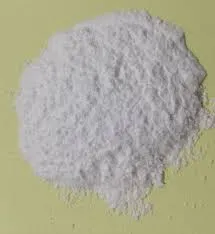- Afrikaans
- Albanian
- Amharic
- Arabic
- Armenian
- Azerbaijani
- Basque
- Belarusian
- Bengali
- Bosnian
- Bulgarian
- Catalan
- Cebuano
- Corsican
- Croatian
- Czech
- Danish
- Dutch
- English
- Esperanto
- Estonian
- Finnish
- French
- Frisian
- Galician
- Georgian
- German
- Greek
- Gujarati
- Haitian Creole
- hausa
- hawaiian
- Hebrew
- Hindi
- Miao
- Hungarian
- Icelandic
- igbo
- Indonesian
- irish
- Italian
- Japanese
- Javanese
- Kannada
- kazakh
- Khmer
- Rwandese
- Korean
- Kurdish
- Kyrgyz
- Lao
- Latin
- Latvian
- Lithuanian
- Luxembourgish
- Macedonian
- Malgashi
- Malay
- Malayalam
- Maltese
- Maori
- Marathi
- Mongolian
- Myanmar
- Nepali
- Norwegian
- Norwegian
- Occitan
- Pashto
- Persian
- Polish
- Portuguese
- Punjabi
- Romanian
- Russian
- Samoan
- Scottish Gaelic
- Serbian
- Sesotho
- Shona
- Sindhi
- Sinhala
- Slovak
- Slovenian
- Somali
- Spanish
- Sundanese
- Swahili
- Swedish
- Tagalog
- Tajik
- Tamil
- Tatar
- Telugu
- Thai
- Turkish
- Turkmen
- Ukrainian
- Urdu
- Uighur
- Uzbek
- Vietnamese
- Welsh
- Bantu
- Yiddish
- Yoruba
- Zulu
Dec . 29, 2024 03:28 Back to list
Colistin Sulfate Salt Applications and Safety in Modern Medical Treatments
Colistin Sulfate Salt An Overview
Colistin, also known as polymyxin E, is an antibiotic that belongs to the polymyxin class of drugs. It has a critical role in the treatment of multi-drug resistant gram-negative bacterial infections. Colistin sulfate salt is a formulation of colistin that is commonly used in clinical settings, particularly for treating severe infections caused by bacteria resistant to other antibiotics. In recent years, the significance of colistin has surged due to the alarming rise in antibiotic resistance, leading to its renewed appreciation among healthcare professionals.
Historical Context
Colistin was first introduced in the 1950s as a treatment option for infections caused by gram-negative bacteria. Its use declined in the late 1970s due to the emergence of newer antibiotics with fewer side effects and better efficacy. However, the advent of multi-drug resistant organisms in the 21st century has revitalized interest in colistin as a last-resort therapeutic agent. This resurgence has prompted both clinical research and regulatory considerations surrounding its use, formulations, and delivery methods.
Mechanism of Action
Colistin exerts its antibacterial effects primarily by disrupting the bacterial cell membrane. It is a cationic detergent that binds to lipopolysaccharides in the outer membrane of gram-negative bacteria, leading to membrane disruption and cell death. This mechanism is especially effective against species such as Escherichia coli, Klebsiella pneumoniae, and Pseudomonas aeruginosa.
Because of its unique mode of action, colistin remains a valuable tool in the antibiotic arsenal, particularly in cases where conventional antibiotics fail. However, the mechanism also raises concerns about potential toxicity, particularly nephrotoxicity and neurotoxicity, which necessitate careful monitoring during therapy.
Formulations of Colistin
colistin sulfate salt

Colistin sulfate salt is the neomycin-like formulation of colistin, usually available in intravenous and nebulized forms. The intravenous route is preferred for systemic infections, particularly in the case of sepsis or pneumonia caused by resistant organisms. Nebulized colistin is commonly used to treat lung infections in patients with cystic fibrosis or bronchiectasis. Each formulation has distinct pharmacokinetics and pharmacodynamics that clinicians must consider when prescribing the medication.
Resistance and Challenges
Despite its effectiveness, the use of colistin is not without challenges. The misuse and overuse of colistin have led to the emergence of colistin-resistant bacteria, which pose a serious public health threat. Resistance mechanisms include modifications of the lipopolysaccharide structure in bacterial membranes, preventing colistin from binding effectively. This has raised critical concerns about the sustainability of using colistin as a last-line treatment option.
To combat resistance, judicious use of colistin is essential. It should be reserved for confirmed multi-drug resistant infections, accompanied by appropriate susceptibility testing whenever possible. Surveillance programs and antimicrobial stewardship initiatives are necessary to monitor the use of colistin and mitigate the development of resistance.
Future Directions
Advancements in pharmacological research are aimed at optimizing the use of colistin. Novel formulations, such as lipid-conjugated colistin derivatives, are under investigation to enhance efficacy and reduce toxicity. Additionally, combination therapy involving colistin and other antibiotics may provide synergistic effects to combat resistant pathogens.
In summary, colistin sulfate salt is a crucial antibiotic in the fight against multi-drug resistant gram-negative bacteria. While it presents significant therapeutic benefits, the challenges of resistance and potential toxicity require careful consideration and management. Continued research and responsible stewardship are vital to ensure that colistin remains an effective treatment option for years to come. The evolution of antibiotic resistance underscores the importance of ongoing vigilance, innovation, and collaboration within the medical community to safeguard the future of antibiotic therapy.
-
Guide to Oxytetracycline Injection
NewsMar.27,2025
-
Guide to Colistin Sulphate
NewsMar.27,2025
-
Gentamicin Sulfate: Uses, Price, And Key Information
NewsMar.27,2025
-
Enrofloxacin Injection: Uses, Price, And Supplier Information
NewsMar.27,2025
-
Dexamethasone Sodium Phosphate Injection: Uses, Price, And Key Information
NewsMar.27,2025
-
Albendazole Tablet: Uses, Dosage, Cost, And Key Information
NewsMar.27,2025













